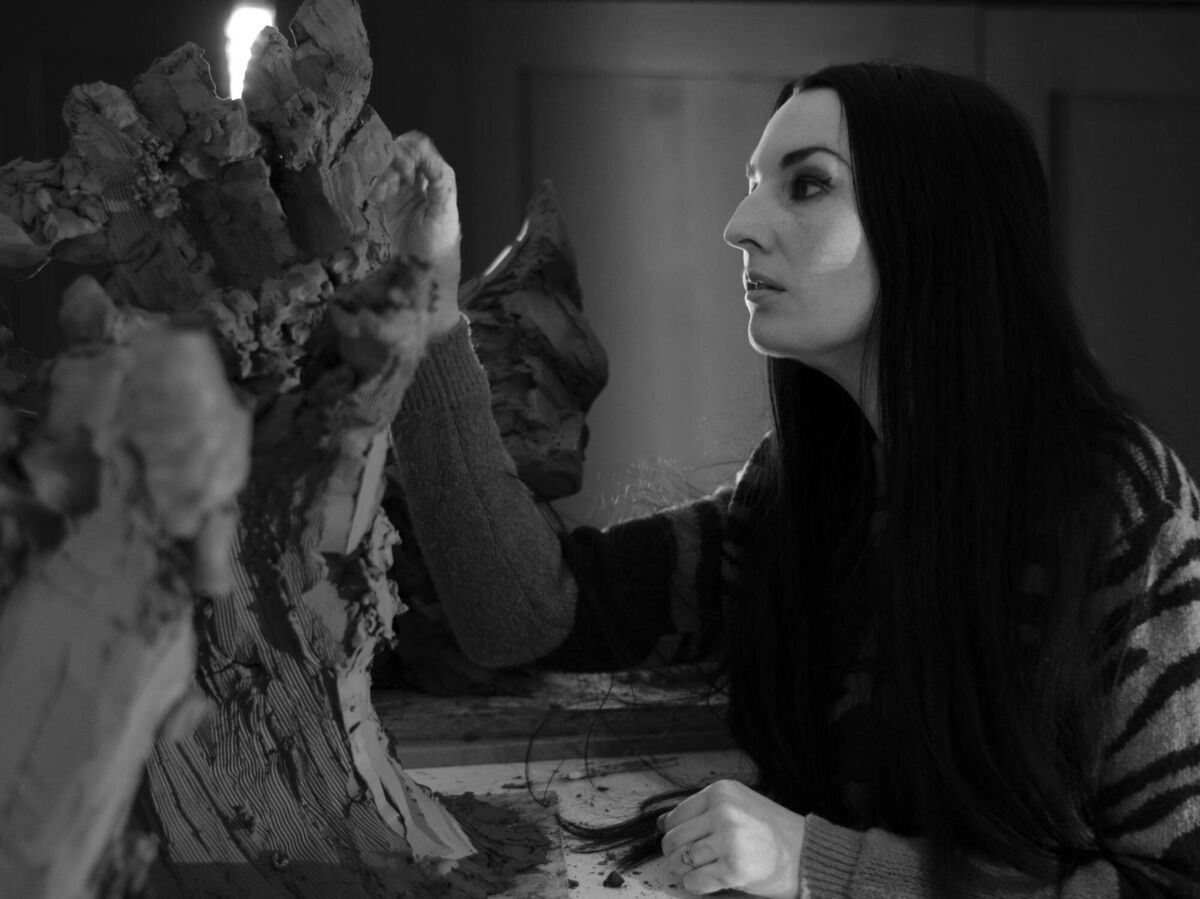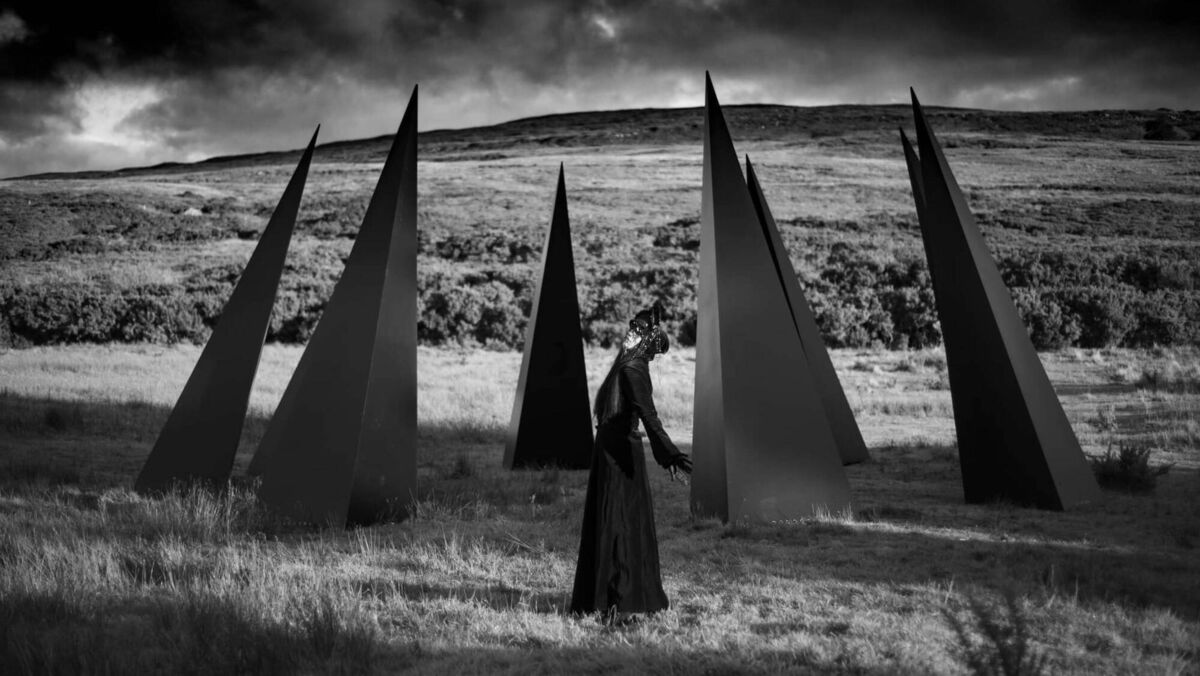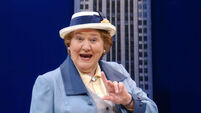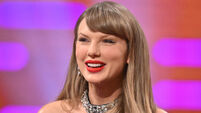Aideen Barry: 'I’m from Mayfield, so I have that Roy Keane thing'

Aideen Barry in a video still from Not To Be Known, recently acquired by the Crawford in Cork.
Aideen Barry could hardly be more industrious. The Cork-born artist’s solo exhibition By Slight Ligaments is currently running at Limerick City Gallery of Art, and will then tour to the Source Arts Centre in Thurles, the Centre Culturel Irlandais in Paris, and a number of venues in North America; her concert film Oblivion/Seachmalltacht is showing on a public screen in Dublin; and there is the first screening of her debut feature film, commissioned by Kaunos 2022 Capital of Culture, to look forward to later this month. Last but not least, she has also designed a postage stamp.
Barry’s career has maintained a similarly hectic pace since she graduated from Galway Mayo Institute of Technology with a BA in Fine Art, Sculpture in 2002. “I’m from Mayfield, so I have that Roy Keane thing, I’m quite mouthy,” she says. “When I was still an undergrad, I invited the director of Galway Arts Centre, Helen Carey, to come in and see my work. I asked how I could get a show in Paris, and she said, ‘ask me’.”
It transpired that Carey was about to become the first director of the Centre Culturel Irlandais, and she duly awarded Barry a residency and facilitated her performance of Bloomsday, a meditation on the passage of time inspired by James Joyce’s Ulysses, in June 2003. “That was a fantastic start to my career,” says Barry. “I still think of Helen as my fairy godmother.”
There followed projects as diverse as Levitating, a film that gave the impression that Barry, with her Gothic black hair, was doing the housework while suspended several inches off the ground; Flight Folly, a performance that involved the artist wearing a white dress equipped with sixteen toy helicopters she raised and lowered by remote control; and the widely acclaimed solo exhibition, Brittlefield, at the Royal Hibernian Academy in Dublin. Most extraordinary, perhaps, was Vacuuming in a Vacuum, a filmed performance of Barry, in a custom-made vacuum cleaner outfit, floating in a vacuum chamber, a project she undertook at the Kennedy Space Centre in Florida in 2008.
“That was amazing,” she says. “We shot it in an aircraft called the Vomit Comet, which is used for training astronauts in the effects of weightlessness. We were so far up in the atmosphere we could see the curvature of the earth.”

For many years, Barry juggled her creative projects with parenthood and a lecturing career at Limerick Institute of Technology. Her work ethic and invention did not go unnoticed. In 2019 she was elected to the artists’ representative body Aosdána, and in 2020 to the Royal Hibernian Academy, an honour usually reserved for artists working in traditional media such as painting and sculpture. In 2021, the Crawford Art Gallery acquired her video work Not To Be Known for its permanent collection, while UCC, through the Glucksman Gallery, bought an entire suite of her Monachopsis drawings.
Membership of Aosdána comes with a modest stipend, the cnuas, which has allowed Barry to step back from teaching and concentrate full-time on her artmaking. She has spent much of the past few years travelling back and forth to Lithuania, to work on Klostós (Folds/Pleats), the feature film commissioned by Kaunos 2002 Capital of Culture. She was otherwise at home, in rural Tipperary, preparing for her Limerick exhibition.
“Almost everything in By Slight Ligaments was made during the pandemic, and it’s themed around the idea of an apocalypse. One of the things I’m very nervous about is that we could be the last generation of artists. The exhibition is asking, how do you make work about the end of the world, or the end of humanity? It’s like Mary Shelley’s Frankenstein; all this work was sewn together out of that kind of fear.”
At the centre of the exhibition is Oblivion/Seachmalltacht, a film recording of the concert livestreamed by RTÉ from The Complex, Dublin on December 21. It featured performances by Irish harpist Aisling Lyons and the Inuit electronica artist and throat singer Riit, along with contributions by the composers Fiona Sheehan and Cathal Murphy, the costume designer Margaret O’Connor and the author Sinéad Gleeson. The concert is currently being shown on an outdoor screen at Wilton Park, Dublin, as part of the Living Canvas cultural initiative.

Oblivion/Seachmalltacht was created under the Bunting Commission for the Irish Traditional Music Archive and Music Network Ireland, and was inspired by the work of Edward Bunting, who compiled the first written compendium of Irish harp music in the late 18th and early 19th centuries.
“Bunting was extraordinary,” says Barry. “At the age of nineteen, he started this project of writing down the last remaining lilts and airs for the Irish harp, just as the tradition seemed about to die out. There were only eleven Irish harpists left in the world; the tunes had been passed down from one generation to the next, but they’d never been written down before. Bunting seems to have understood the urgency of the task.
“I find that inspiring because we’re at this kind of moment in time now too. We’re facing an environmental catastrophe as a consequence of man’s interference with nature. As artists, we need to talk about how we should go about saving the culture, and asking what the role of art is in this time of huge uncertainty.”
Barry anticipates spending much of 2022 promoting Klostós (Folds/Pleats). Set in Kaunos, the animated feature film is based on a number of stories submitted by local amateur and professional writers. “I shot it in stop motion, in the style of the short films I’ve made before. It’s all about the history of the city and its amazing architecture; we’d call it Art Deco, but they call it Inter-War Modernism. The film was all made through social engagement. Actors, dancers, prop makers; everyone volunteered their time to get it done. It’s getting its VIP screening for the crew in Kaunos on 23rd January. After that, we’re entering it for the film festivals here in Ireland, so hopefully it will have its official premiere at one of those.”
Future projects include working with the Irish Traditional Music Archive again. “I’ll be collaborating with [traditional musician and Lankum frontwoman] Radie Peat, probably towards the end of the year. It looks like I’ll be going up to the Arctic circle too, to do another project with Riit. And I’ve just done a postage stamp with An Post. I’m so excited about that. I’m not allowed say much about the design, but it will relate to poisons and plague. Full gross Aideen Barry, in other words.”
- aideenbarry.com
- limerick.ie/discover/eat-see-do/arts-culture/art-galleries/limerick-city-gallery-art
- iput.com/aideen-barry
- klostes.com/trailer
John Kennedy: Edgelands, South Tipperary Arts Centre, Clonmel 14th Jan – 15th Feb: Following on from his residency award at the Arts Centre, the Clonmel artist presents a new body of paintings on the theme of isolation, abandonment and remoteness.
Sam Keogh: Sated Soldier, Sated Peasant, Sated Scribe, Kerlin Gallery, Dublin 22nd Jan - 19th Feb: An exhibition of new collages and ceramic work, inspired by the medieval myth of Cockaigne, a land where food is bountiful, work abolished, and there is sexual liberation.
Odysseys, Crawford Art Gallery, Cork 22nd Jan – 3 April: Curated by Flicka Small and Michael Waldron, Odysseys marks the centenary of James Joyce’s Ulysses – first published in Paris on 2nd February 1922 – and features the work of James Barry, Beatrice Gubbins, Mary Swanzy and Roderic O’Conor, among others.
Student of the Year Exhibition, the Lavit Gallery, Cork 27th Jan – 12th Feb: Each year, the Lavit presents its Artist of the Year Award to graduates of MTU Crawford College of Art & Design. The prize includes a showcase exhibition, which this year features Luna Torresel Rave, Lorraine Poulter, Lorraine Parker and Fionn van der Noll.
A Nation Under the Influence: Ireland at 100, Centre Culturel Irlandais, Paris From 3rd Feb: Marking the centenary of Irish independence, this exhibition features the work of six contemporary artists: Anne Maree Barry, Ailbhe Ní Bhriain, Alison Lowry, Mairéad McClean, Áine Philips and Jennifer Trouton.


